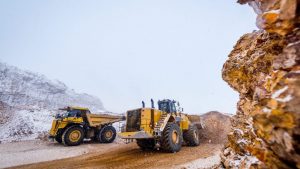Maxim Power Corporation has the green light from provincial regulators to construct a new coal-fired power generating unit near Grande Cache, Alberta, but environmental groups say the decision was timed to avoid new federal regulations.
Maxim Power Corporation has the green light from provincial regulators to construct a new coal-fired power generating unit near Grande Cache, Alberta, but environmental groups say the decision was timed to avoid new federal regulations.
“This final decision fails to provide any insight into the AUC’s (Alberta Utilities Commission) rush to issue the interim decision at the end of June,” said Ecojustice lawyer Barry Robinson. “One can only assume that it was the AUC’s intent to assist Maxim in avoiding the pending federal regulations. It’s difficult to understand how that can be in the interest of all Albertans.”
Calgary-based Maxim Power received final approval from the Alberta Utilities Commission on Aug. 10, for the construction of the new 500-megawatt (MW) generating unit.
An interim decision was announced on June 30.
The facility has an estimated capital cost of $1.5 billion and will be located adjacent to the existing 150-MW H.R. Milner Generating Station site.
Last year, former federal environment minister of the environment, Jim Prentice, proposed new regulations, to reduce greenhouse gas emissions, by imposing tougher performance standards on new and existing coal-fired electricity generation units.
Under the regulations scheduled to come into effect on July 1, 2015, power companies would have to close their coal-fired facilities, as they reach the end of their lifecycle over the next 10 to 15 years. They wouldn’t be allowed to refurbish or replace them with new coal units, unless they include technology to capture carbon dioxide and sequester it underground.
Given this fact, Maxim sent a letter to the AUC in early June to request an expeditious approval of its application without a hearing.
“Maxim requested that the commission issue a decision on or before June 30, 2011, given the absence of parties with standing, and in order to accommodate its business activities, which are dependent upon the outcome of this proceeding,” said the interim decision.
One of the reasons Maxim gave in this letter for a quick approval of the application was to address the potential impact of pending federal carbon legislation on this plant.
Pembina Institute and Ecojustice filed a court challenge when the project received an interim approval.
They asked the AUC to hold a public meeting to discuss the new generating station.
However, the regulator rejected this approach and issued its final decision without hearings.
The AUC final approval, released last week, concluded the construction and operation of the power plant is in the public interest and will have minimal negative social impacts.
“With respect to environmental impacts, the commission has considered that these will be adequately addressed given the design of the power plant, the various mitigative measures committed to by Maxim, and Maxim’s obligations to comply with existing regulations and standards and the regulatory requirements of Alberta Environment and all other responsible government departments and agencies,” said the final decision.
The AUC’s conditions for the proposed plant include measures to mitigate potential fogging and icing along Hwy. 40 near the facility, as well as the capturing and disposing of ash produced by the generating station.
The company is required to meet other conditions imposed by Alberta Environment and the federal Department of Fisheries and Oceans and have the plant built by July 31, 2015. Construction of the plant is scheduled to begin next summer and is expected to take about three years.
“After helping this coal plant to beat the federal deadline, the AUC has now also loosened the standard for greenhouse gas pollution in Alberta,” said Chris Severson-Baker, managing director of the Pembina Institute. “Approvals issued a decade ago included a requirement that the companies offset the plant emissions down to the level of a natural gas power plant.”
The last two new coal-fired power plants built in Alberta are Keephills 3, which comes online later this year, and Genesee 3, which powered up in 2005.
They were approved by the province 10 years ago on the condition that they offset their greenhouse gas emissions.
Pembina is outraged that the new coal-fired plant won’t be subject to the same rules.
It will be allowed to emit about three million tonnes of greenhouse gases a year. This is about twice the carbon dioxide equivalent of a similarly sized natural-gas-fired plant.
Construction of the plant includes a pulverized coal combustion system, a high efficiency supercritical high pressure steam generator, a high-efficiency steam turbine generator, air emissions control equipment, a water treatment system and an electrical substation.
The project would average 450 workers over the 3.5 years of construction, with a peak workforce of 575.










Recent Comments
comments for this post are closed